Troubleshooting Tools Every IT Pro Must Know

Full-Access Members Only
Sorry, this lesson is only available to Server Academy Full-Access members. Become a Full-Access member now and get instant access to this and many more premium courses. Click the button below and get instant access now.
Instructions
Q&A (0)
Notes (0)
Resources (1)

Saving Progress...
Notes can be saved and accessed anywhere in the course. They also double as bookmarks so you can quickly review important lesson material.
In this Video:
- We will demonstrate the troubleshooting tools that every IT Pro must master in order to be successful.
- At the completion of this lecture you will gain valuable-work related knowledge and experience by utilizing and implementing the tools discussed in this lecture.
What is a baseline?
- In the simplest terms, a network performance baseline is a set of metrics used in network performance monitoring to define the normal working conditions of an enterprise network infrastructure.
- Engineers use network performance baselines for comparison to catch changes in traffic that could indicate a problem. Several of the following tools will assist you in creating a baseline for your network. I recommend that you create a baseline for your network by including screen shots and detailed explanations just like we will demonstrate in this lecture.
ping
- Provides a basic connectivity test between the requesting host and the destination host. Ping uses the ICMP protocol to send out an echo request. The destination host sends back an echo response.
- Type ping svr-us.uss.com
Under ping statistics, we sent out 4 packets and the destination sends back 4 packets.
We sent out 32 bytes of data and we received the data back in 1 ms with no lost packets.
If you receive a response, from a computer such as this you will know that this device is no longer on the network. We sent out four packets and lost all four.
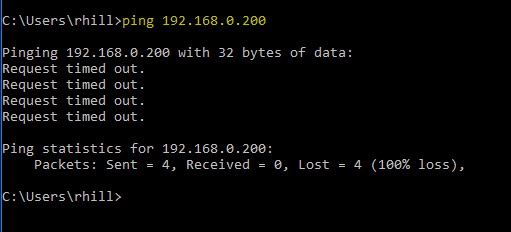
tracert
- Tracert, displays the step-by-step route a packet takes to the destination that you specify. The term hops refers to the number of routers.
My router starts the route at 192.168.1.1 and ends at hop #11, IP address 172.217.5.238.
- How can this information be used? This tracert output could be part of your baseline. From your baseline, tracert shows that under normal circumstances the route from your location to google.com is 11 hops. If you are experiencing network problems, and the network times out at hop #6, you could call Verizon and tell them that you ran a tracert and ask them to check for problems at the ashburn va site.
ipconfig
• Gives you basic information for troubleshooting a computer. Here the IPv4 address, subnet mask and default gateway is displayed.
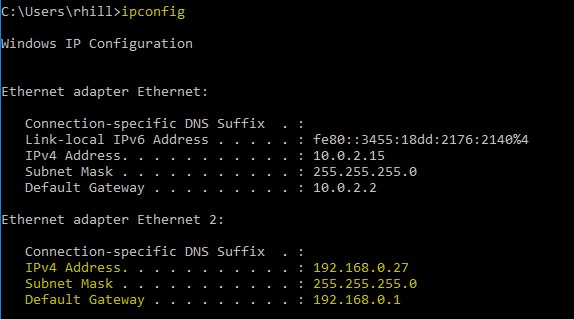
ipconfig /all
• Displays more detail such as DHCP and DNS server IP address information.
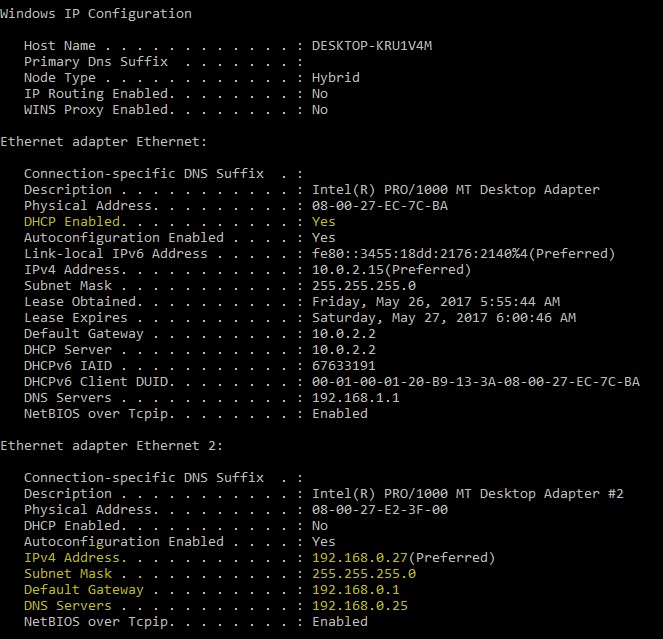
ipconfig /release
• Sends a notice to the DHCP server, that the old client’s IP address has been discarded and is available.
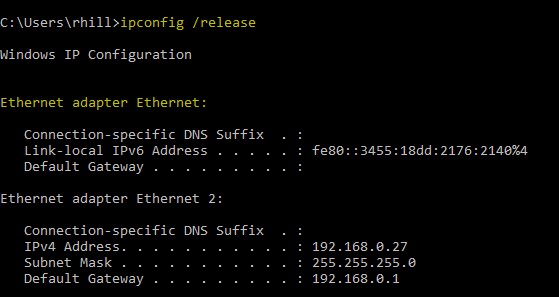
ipconfig /renew
• Requests a new IP address.
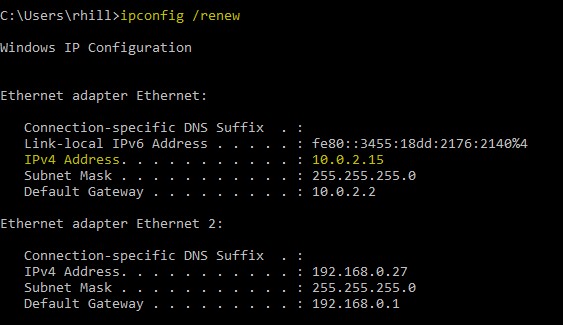
ipconfig /flushdns
• Flushes the contents of the DNS client’s resolver cache

nslookup
• Assists in troubleshooting address resolution issues. Can be used in interactive or non-interactive mode.
nslookup (server name)
• Displays the current server in non-interactive mode

nslookup
• –type=ns (domain name) – Displays only the name server.

nslookup
- -type=soa uss.com (domain name) – Displays the SOA records for the zone.
- A Start of Authority (SOA) resource record indicates which domain name server (DNS) is the best source of information for the specified domain. Every domain must have an SOA record.
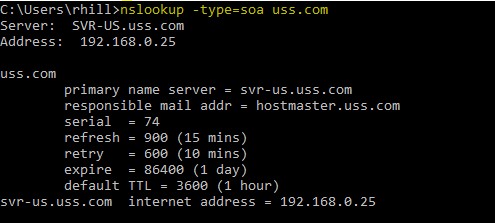
nslookup (return) (interactive Mode)
- ls -d (domain name) Performs a zone transfer from the domain. Zone transfer must be enabled on the server. To enable zone transfer open server manager, tools, DNS, double click on forward lookup zone, highlight the zone, right click, click properties, zone transfers. Check allow zone transfers. In this case, I choose “only to the following servers. (To any server is a security issue) click edit, type your dns zone. In this case, I type the IP address of my Windows 10 workstation, then click ok, then apply, then ok.

Server Academy Members Only
Sorry, this lesson is only available to Server Academy Full Access members. Become a Full-Access Member now and you’ll get instant access to all of our courses.


